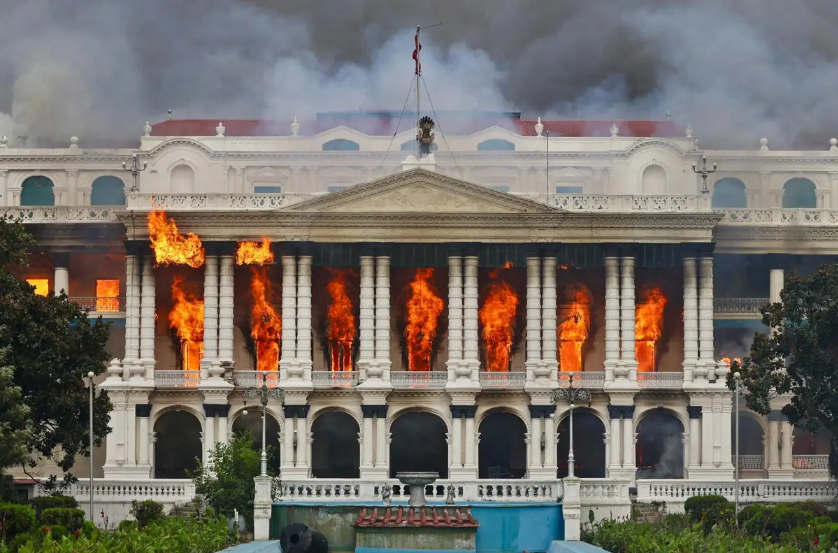
Associated Press
Nepal Cabinet Building burns amid controversty after Prime Minister resigns.
Young protestors, also referred to as the “Gen Z” of Nepal are heard to wreak chaos and riots towards their government on September 9th after the government’s ban on social media.
After the destruction, Sushila Karki was appointed to lead the country on September 12 until elections. This also marks her as the first woman to serve as Prime Minister of Nepal. The main task for Nepal currently is to rebuild.
Avash Regmi, a freelance photographer in Nepal told Reuters that “corrupt politicians must be thrashed out from parliament and new leaders with a good vision must be appointed. This fight is against corruption.”
These protests started from the suspension of social media (Facebook, Instagram, Youtube, etc…) on September 4th of this year. National Public Report (NPR) reports that “the proposal has been widely criticized as a tool for censorship and for punishing government opponents who voice their protests online.” This led to receiving a lot of backlash from the young people of Nepal, especially Gen Z.
Originally, on September 8th, there were young protesters gathered in Kathmandu, and police ended up responding with force after some protesters began to breach security barricades near the federal parliament building. Long after this, on September 9th, the government buildings were met with fire and violence.
Sudan Gurung, a protest organizer in Nepal expressed to The New York Times, “even if they kill me, there are thousands more like us now.”
The destruction of government buildings and chaos within Nepal led to excessive damage and $21 billion in financial losses, as stated by ET Now. There was an overall government collapse, which led to the Prime Minister, K.P. Sharma Oli resigning, with elections being set for March 2026.